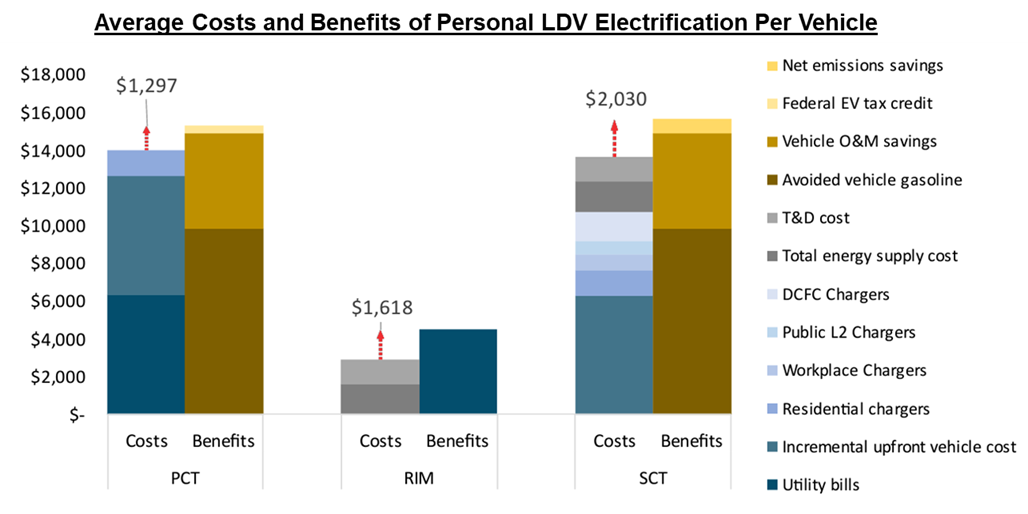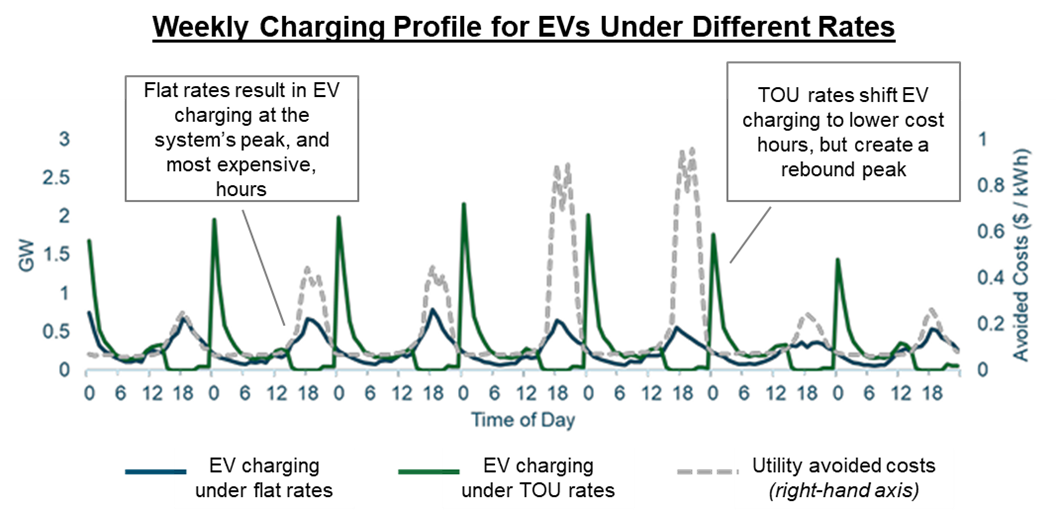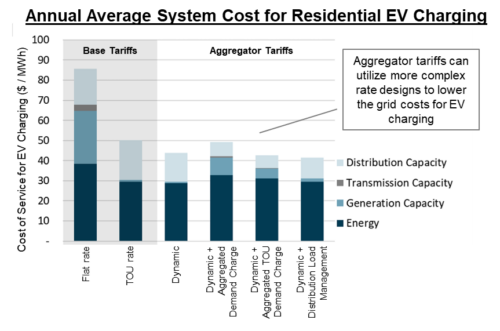E3 developed the EVGrid model to analyze grid impacts of electric vehicles and provide custom estimates of the economic costs and benefits associated with EV adoption and programs. Capable of modeling a diverse set of electrified vehicle segments, from passenger cars to delivery trucks, EVGrid combines regional and utility-specific data with the latest technology and behavioral insights to create charging load profiles that are among the industry’s most robust. EVGrid then uses the customized load shapes to show benefits and costs associated with different charging behavior.
To model charging behavior, E3 developed a bottom-up modeling approach that simulates the driving and charging behavior of EV drivers. Driving behavior is captured using real-world travel data, then characterized by vehicle type and access to charging at different locations. EVGrid models resulting load shapes based on charging necessary to meet drivers’ travel needs, under three different charging types: unmanaged, managed, and vehicle-to-grid (V2G).
EVGrid models the costs and benefits associated with EV adoption, programs, and different charging behavior. Our model can evaluate cost-effectiveness from different perspectives, such as the participant or EV driver perspective, the non-participating utility ratepayer perspective, and a societal perspective, to align with the standard cost tests used in many regulatory proceedings. EVGrid models the lifetime costs and benefits and provides resulting benefit-cost ratios on a net present value (NPV) basis. E3 has assisted utilities across North America in formulating, justifying, and winning regulatory approval for transportation electrification programs based on cost-benefit analysis from EVGrid.
Using the EVGrid model to provide custom estimates of EV charging load shapes and benefit-cost analysis of different programs and adoption scenarios, E3 has successfully supported clients through a broad range of regulatory filings, investment decisions, and system planning initiatives:
- For utilities, E3 has developed comprehensive, long-term “strategic roadmaps,” including Hawaiian Electric’s first-of-its-kind “Electrification of Transportation Strategic Roadmap” and Arizona Public Service and Tucson Electric Power’s “Arizona Statewide Transportation Electrification Plan.”
- EVGrid has provided charging load shape analyses and benefit-cost assessments for utility EV programs regulatory filings in jurisdictions as diverse as California, New York, Minnesota, Colorado, Massachusetts, Hawaii, Arizona, and Wisconsin.
- For energy agencies, E3 has analyzed the benefits and costs of EVs in distinct geographies and identified policy mechanisms and utility interventions to promote EV adoption.
- For transit, fleet, and utility clients, EVGrid has illuminated impacts of rate design choices on EV economics, including dynamic tariffs to promote charging during solar abundance and rate structures for widespread electrification.
- For automakers and technology companies, E3 has provided customized market potential and valuation analyses for smart charging and vehicle-to-grid (V2G) technologies.
- EVGrid has also provided detailed analyses of EV charging load impacts to support local distribution assessments and broader system planning.
Benefits and costs of EV adoption

The EVGrid model was recently used to support testimony for Xcel Energy’s transportation electrification programs in Minnesota. E3 calculated the costs and benefits of EVs in Xcel’s territory, demonstrating net benefits from the driver, ratepayer, and societal perspectives.
EV charging load shapes under current and advanced rate designs


Using EVGrid, E3 modeled EV charging load shapes based on current flat rates and TOU rates, and illustrated how more dynamic tariffs used by an aggregator could reduce system costs for EV charging.
All Tools


